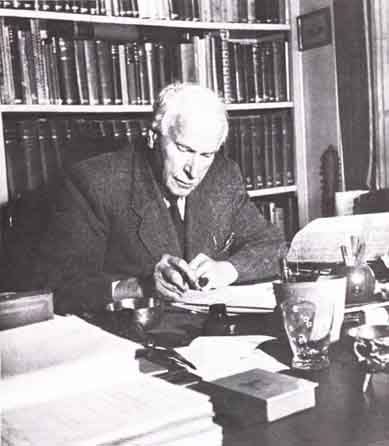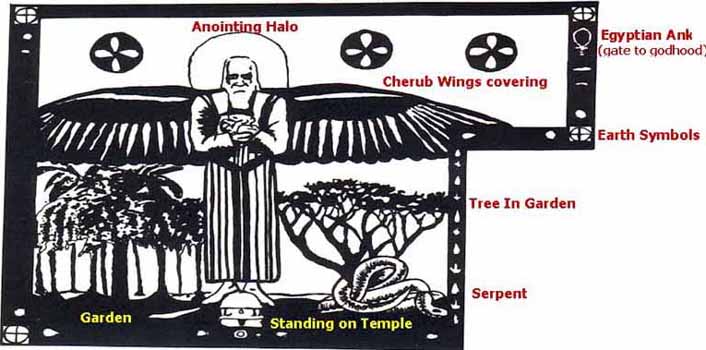
Esoteric Studies

Jung observed that Philemon and other figures of his fantasies gave him crucial insights. To this end he referred to things in the psyche, which he could produce, but which could produce themselves, as having their own life. Philemon represented a force that was other than himself, much like a channeler or medium in today's world gets information from allegedly a source from the other side. he greatly enjoyed these conversations as a learning tool.
Psychologically, Philemon represents superior insight to Jung. To those who do not study metaphysics, Philemon might be perceived as a figment of Jung's imagination, or a reflection of a mental illness. Jung did not consider himself insane. He believed that Philemon was a source of legitimate information, whose validity could be tested in fact. This opened the door to his theory of a collective unconsciousness, a type of library, if you will, containing everything ever known and recorded, replete with archetypes and active principles that interacted between that source and human consciousness.
Jung had a life long fascination with Friedrich Nietzsche (1844-1900), but he distanced himself from Nietzsche for fear he would would suffer the same fate, mental illness in his old age.
Jung's book Thus Spoke Zarathustra (Also Sprach Zarathustra) chronicles the wanderings and teachings of Zarathustra, Zoroaster, the ancient Persian prophet who founded Zoroastrianism.

Zarathustra
Philemon was not the only entity Jung channeled. Among the others was a cultivated elderly Indian who told Jung that his experience was identical to many mystics. In this case his spirit guide, teacher or guru, said that he had been a commentator on the Vedas, centuries before. Jung felt that he had become as one with the ancient teachers and priests, and others thought to have experienced the divine.
In 1916 Jung made a connection with Basilides. Basilides (early 2nd century), was an early Christian religious teacher in Alexandria, Egypt. Basilides apparently wrote twenty-four books on the Gospel and promoted a dualism influenced by Zoroastrianism. His followers formed a Gnostic sect, the Basilideans. Historians know of Basilides and his teachings only through the writings of his detractors, Agrippa Castor, Irenæus, Clement of Alexandria, and Hippolytus. It is impossible to determine how reliable these hostile accounts are. Jung transcribed Septem Sermones ad Mortuos as dictated to him by Basilides of Alexandria.
Channeling Basilides was in some ways considered a possession to Jung. He felt that his house may be haunted, especially when his eldest daughter saw a white ethereal figure passing through the room. His second daughter, independent of the eldest daughter's observation, related that twice the same night her blanket has been thrown to the floor. Jung's nine year old son, experienced an anxiety dream that night waking up terrified.
Around five o'clock that afternoon, the front doorbell continued to ring without stopping. It was a bright summer day. the two maids were in the kitchen, from which the open they could view the door. Everyone looked to see who was ringing the bell, but there was no one in sight as the bell could be seen moving in and out. An explanation was never found.
Jung became frightened. He shouted out, "For God's sake, what madness is this?" Voices cried out in chorus, "We have come back from Jerusalem where we found not what we sought."
Over the next three evenings, Jung quickly finished the book. As soon as he began to write, the ghostly assemblage, the hauntings, stopped.
Jung's channelings of Basilides has been labeled a core text of depth psychology. The text is intriguing for several reasons. For one, he uses the name Abraxas to describe the Supreme Being that had originally generated mind, nous, consciousness and then other powers of consciousness into thought.
Jung did not teach the return of human essence to the Gnostic pleroma wherein individuality was lost. Instead he adhered to individualism, which maintained the fullness of human individuality.
In metaphysics we often read that both possibilities can be encountered, and found in some religions. The soul at its final stage can become one with source (pleroma) or maintain its separate identity inside the One (individuation).
The easiest parallel is with the hologram, in which each 'replica' is unique, yet also the whole. If any replica was aware, and would at one point have to ask what it wanted, some would ask to surrender into the greater hologram, whereas other replicas would ask to retain their individual memories, though part of the whole.
It is clear that this experience created the framework in which the concept of the collective unconsciousness would later evolve, information transfered from a collective mind to groups or individuals.
On the matter of his automatic writing, he later wrote, "These conversations with the dead formed a kind of prelude to what I had to communicate to the world about the unconsciousness. All my works, all my creative activity, have come from those initial 'connections', fantasies and dreams which began in 1912, almost 50 years ago. Everything that I accomplished in later life was already contained in them, although at first only in the form of emotions and images."
No comments:
Post a Comment